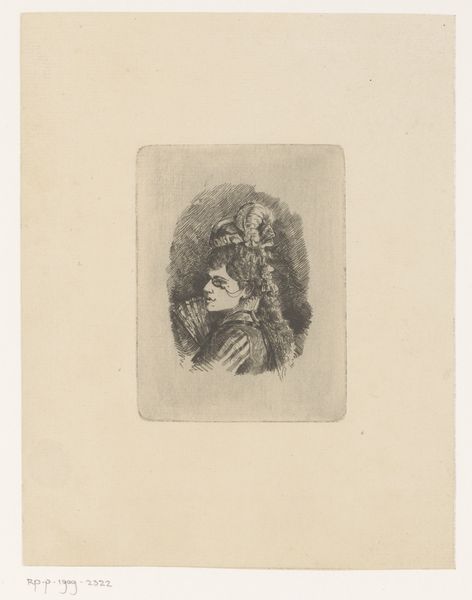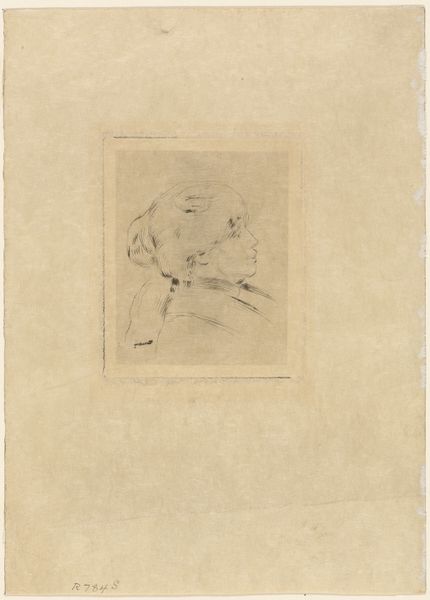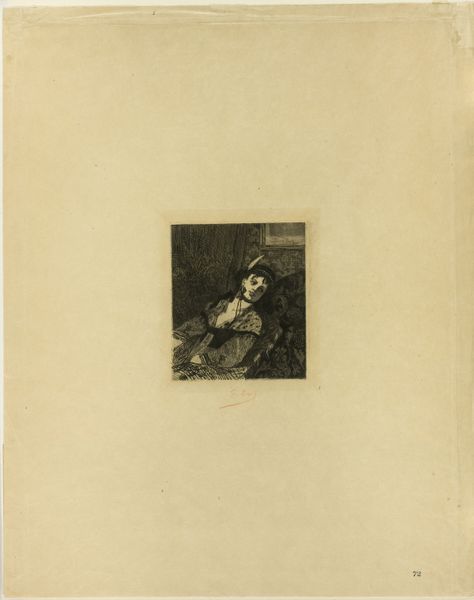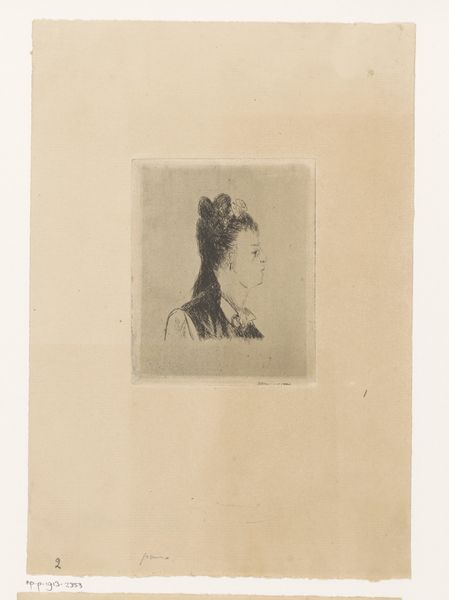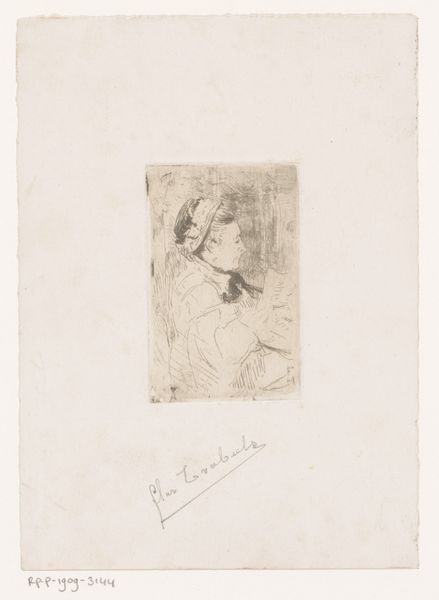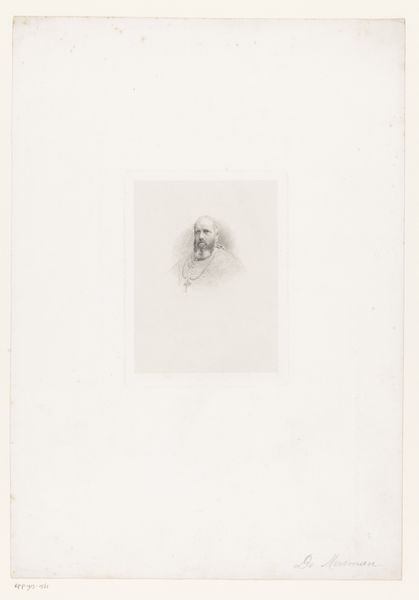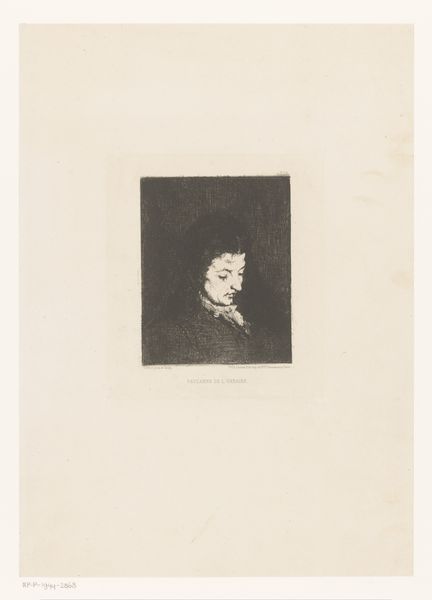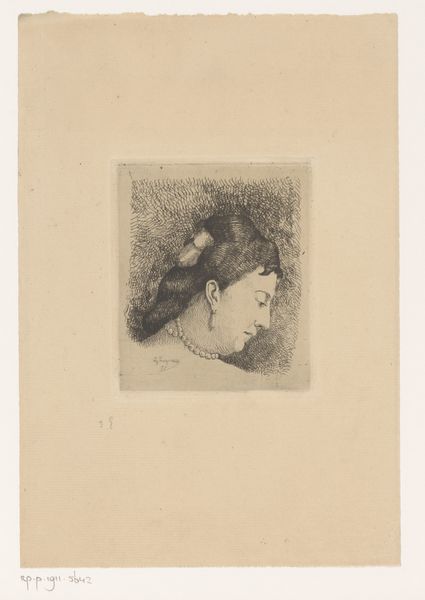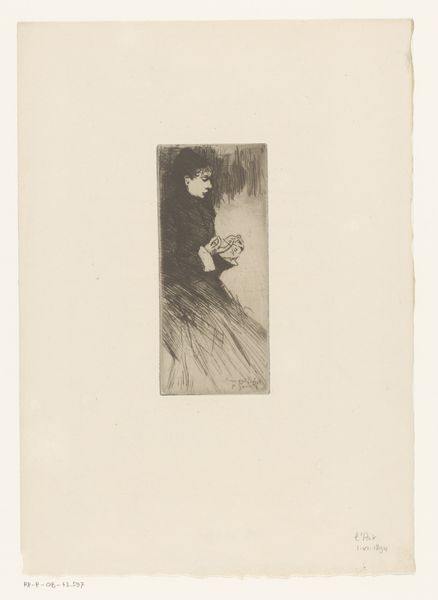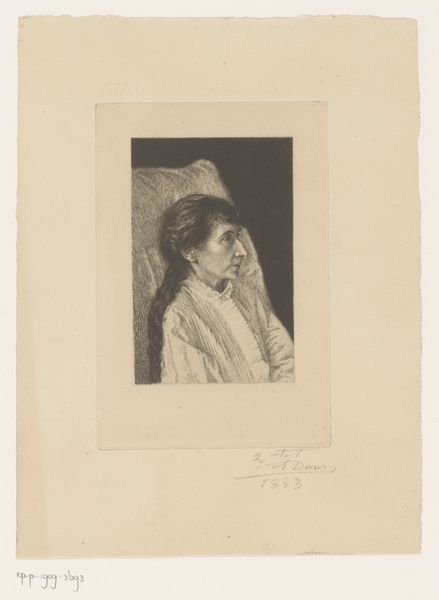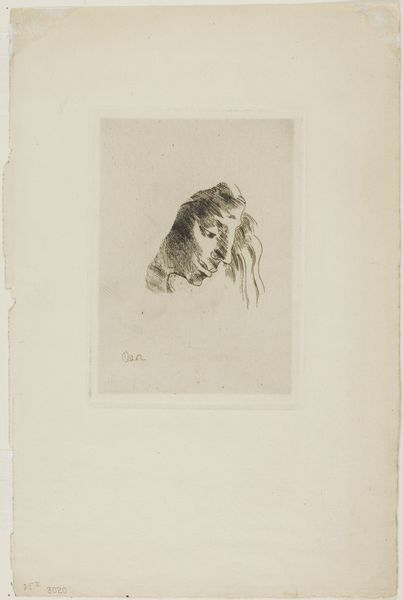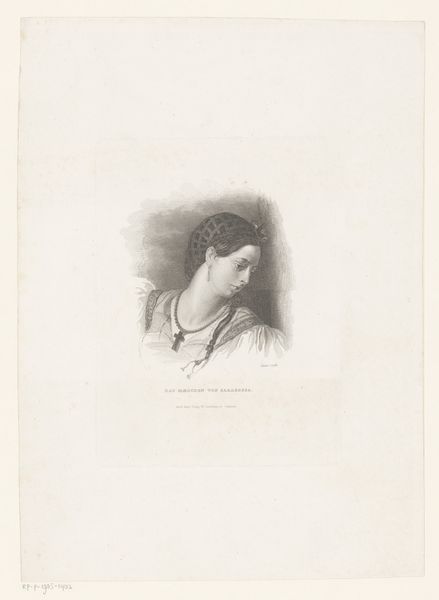
drawing, print, etching, paper
#
portrait
#
drawing
#
pastel soft colours
# print
#
impressionism
#
etching
#
light coloured
#
white palette
#
figuration
#
paper
#
genre-painting
#
remaining negative space
#
soft colour palette
Dimensions: height 140 mm, width 101 mm
Copyright: Rijks Museum: Open Domain
Curator: Here we have Mary Cassatt's "Kinderkopje (gesigneerd)", dating back to 1882. It’s currently held in the Rijksmuseum. Editor: There’s such delicacy to the work. It feels like a whisper of an image, the child almost fading into the paper itself. Curator: As an etching and drypoint, the piece demonstrates Cassatt's interest in printmaking, a medium often considered more accessible than painting at the time. Her involvement challenges the hierarchy within artistic practices. Editor: Absolutely. And you can see the attention to the craft – the conscious use of line to create form, almost sculpted out of shadow. The economical mark-making makes me wonder about the quality of the plates she would have been working with and the kind of press that would achieve such a clean print. Curator: The social context is vital, too. Cassatt, an American artist working amongst the French Impressionists, carved a niche depicting women and children, subverting expectations while working within a patriarchal art world. She portrayed intimate domestic scenes but consciously steered away from sentimental cliché. Editor: That constraint is powerful. There’s an element of labor visible within this intimate portrayal: not just her artistic labour, but implicitly the domestic labor of the child's caregiver, despite their absence from the image. I find myself drawn to that stark contrast of dark shadows against negative space and the interplay with light and material to communicate these details. Curator: This work reveals her engagement with Japonisme as well, which was immensely popular and in vogue in European and American artistic circles. Editor: True; I wonder about how readily available the pigments and acids used to make this etching would have been. We may not always realize it, but an artist’s location would be directly tied to what resources and what techniques were open for them. It reminds you that art-making itself involves labor, and that labor hinges on accessibility. Curator: Cassatt used printmaking to make her art more accessible and to depict domestic scenes more respectfully, but it's fascinating to think of these works entering private collections. Were these children depicted truly more seen, or consumed in the same way as a genre painting with broader commercial reach? Editor: It makes you consider the whole material chain. Thank you for that fascinating perspective. Curator: My pleasure.
Comments
No comments
Be the first to comment and join the conversation on the ultimate creative platform.
